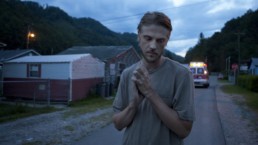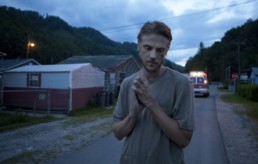Review: ‘Little Accidents’
A blue-collar town struggles to cope with a fatal mining accident, leading one man to question whether the truth always the right course of action.
Everyone has heard of the ripple effect. The micro influencing the macro, or the butterfly effect; through some channel of learning, most of the general public has come to understand these theories of life. This perception of compound influences is transposed onto the internal struggles with morality of members of a little community in the heart of Americana in Sara Colangelo’s writing and directorial debut, Little Accidents.
The film juxtaposes a survivor of a coal mining accident named Amos (Boyd Holbrook) with Owen (Jacob Lofland), a son of one of the deceased miners involved in the accident. The audience is informed early on, with some overly expository dialogue, that Amos is faced with the obstacle of truth in his testimony of what happened in the events leading up to the accident. What makes this testimony so important is that it decides the fate of the entire community that has developed around the coal mine. He must decide between truth and what is best for everyone. Of course, the community attempts to help him make that decision through peer pressure and other methods.
While this is occurring, Owen finds himself in a similar crossroad between truth and what is best for him after accidently killing another boy. The deceased boy just happens to be the son of Diane (Elizabeth Banks) and Bill Doyle (Josh Lucas), the man who is being held chiefly responsible for the accident that killed 10 miners, including Owen’s father. This event will lead to the downfall of the Doyle family that reflects the crumbling sense of community. Once again this goes back to the ripple effect of little accidents leading to bigger effects.
This is [Jacob Lofland’s] second major film following the critically acclaimed Mud back in 2012, and in both performances he has delivered characters with honesty and the genuineness of a seasoned actor.
When watching the film, there are some excellent sparks of future promise. Firstly, Rachel Morrison’s cinematography shows a great deal of potential, especially considering this is her first major feature following a few years of experience in documentaries and television work. She adopts an almost Malick-esque respect for the nature surrounding the story. In addition, she pays so much attention to the decaying and rusting setting filled with old trailer homes, abandoned train tracks and chain link fences that it adds to that sense of a dying community. The camera work also brings more attention to the class differences between characters that is brought up early on in the film, but then is seemingly forgotten in the story, with the exception of Morrison’s camera’s memory.
Another person involved in the film that deserves some attention in future endeavors is young Jacob Lofland. This is his second major film following the critically acclaimed Mud back in 2012, and in both performances he has delivered characters with honesty and the genuineness of a seasoned actor. While his character in Mud was more the funny best friend of the protagonist, he demonstrates excellent range and pathos in Owen, a boy dealing with more guilt than he can handle until he breaks. His portrayal causes audiences to feel compassion for the scared child that is trying to cope with the pain of responsibility for his mistake.
Speaking of mistakes, it’s time for a few cons. Pacing was not a strong suit of the storyline. Characters seemed to develop very rapidly but not with proper reason or cause. For example, the relationship between Amos and Diane seems to read like this: she has a break down at a bible study, he gives her a ride home, they both can’t sleep and so they sleep with each other. It seems to run very quickly to adultery and while there are signs later on that the Doyle’s marriage wasn’t exactly perfect, it’s too difficult to really understand if this is because of their son’s disappearance or something that had been going on for a long time.
On the other side of pacing, the second act was painfully slow and felt as if it was simply re-establishing guilt without any development from the characters. Perhaps this was done intentionally to show a stand-still in the character’s lives due to guilt, but it takes away from the established theme of the micro affecting the macro. However pacing is one of the most difficult aspects of storytelling, and as Colangelo develops as a filmmaker, she should be able to avoid such droughts in plot and character development.
Little Accidents challenges the viewer to think about the difference between right and wrong. Just how subjective is morality and is it always so black and white? Is the truth always the right course of action? The truth is, while the film leaves something to be desired, it is a product of a relatively inexperienced crew and cast that showcases talents and functions well as a starting point. Now it is just a matter of waiting to see if those involved develop, or if the good qualities of the film were just little accidents.
Ryan Denman
Ryan is a contributing writer for CINEMACY.


